In a new paper recently published in the medical journal, Epilepsia, the International League Against Epilepsy have published new terminology for the classification of seizures to be used going forward.
The last update to seizure classification terminology came in 2017 and in this latest update, there are now four main seizures classes and 21 seizure types – this is down from the 63 seizure types that were listed in the 2017 version.
The classification of seizures has been changed as an expert working group appointed by the International League Against Epilepsy - featuring clinical professionals from across the globe - felt the new terminology introduced will help enhance clarity, consistency, and clinical utility across the world when it comes to the classification of a person’s seizures.
A downloadable resource on the new classification of seizures can be read and downloaded at the end of this article.
The most notable changes surround focal seizures – with the main way of defining these types of seizures now described by whether a person’s consciousness is affected. For example, under the new terminology Focal Aware seizures become Focal Preserved Consciousness seizures.
Much like the introduction of the 2017 classifications, the widespread use of the new terminology will take some time to be fully introduced by both the medical and patient community. To that end, we are in the process of fully understanding the changes and updating our website accordingly which will take some time.
We will publish a further article on the changes when this is fully completed. However, we are publishing this article in the interim as it is important that people with epilepsy and their families are aware of the introduction of this new terminology, approved by the International League Against Epilepsy.
Further information around the publication of the new seizure classification and associated terminology can be found via the links below:
- Visit the Epilepsia website to read the full position paper by the ILAE
- Visit the Epilepsia website to read an article about the ILAE’s rationale behind updating the seizure terminology
If you need any support or information regarding your or a loved one’s epilepsy, please do not hesitate to get in contact with your local Community Resource Officer. You can find their details by visiting the ‘Our Local Service’ page on our website.
